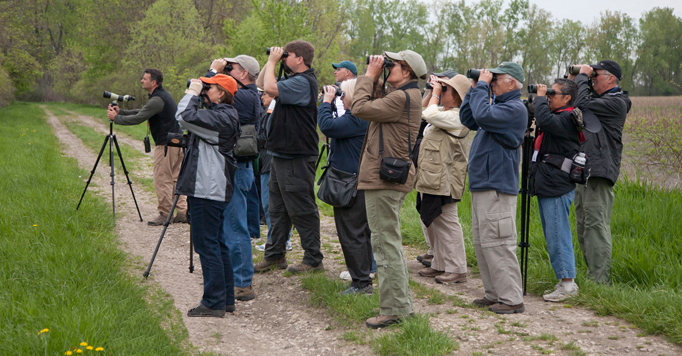
The Ornithology Department carries out specimen-based research. The museum's 35,000 specimens, augmented with specimens borrowed from other museums, is a valuable resource to understand the biology of the world’s birds.
Most ongoing research uses DNA sequences that are derived from these specimens. By sequencing the DNA from many individuals within a single species, the history of that species can be reconstructed. This process is currently being applied to globally-distributed birds like terns and owls, as well as for groups of unrelated species that inhabit the Appalachian mountains and another set of birds in the Philippines.
Current Research
Evolutionary history of Philippine birds
Most of the Philippine islands rose from the sea floor through volcanic activity, and they now host a tremendous diversity of plants and animals. Utilizing DNA sequences from Museum specimens, Dr. Andy Jones is working to reveal the colonization routes of birds in the Philippines, and is filling in some of the many taxonomic revisions that need to be completed.
Geographic Variation In Appalachian Birds
Many bird species have similar breeding distributions, ranging across the boreal forest of Canada and extending south into the high elevations of the southern Appalachians. Dr. Andy Jones and Courtney Brennan are examining geographic variation within these species, using DNA sequences, morphological data and song differences.
Song Structure and Singing Cadence Of the Veery (Catharus fuscescens) In the Appalachian Mountains. Wilson Journal of Ornithology.
Thrush sexing
There are no known physical measurements to distinguish male from female in three common species: Gray-cheeked Thrush, Hermit Thrush and Veery. Using molecular markers in feathers taken from birds during the banding process, Scott Dunn, an undergraduate student at Cleveland State University, is working with Dr. Andy Jones to determine their sex and investigate the migration timing of males v. females in these species.
Fieldwork
La Selva Biological Station, Costa Rica
Dr. Andy Jones collaborates with
Ralph Saporito, Ph.D., Associate Professor in John Carroll University’s Department of Biology, on several ongoing studies of Costa Rican natural history as an outgrowth of annual fieldwork in the Caribbean lowland forest of Costa Rica at
La Selva Biological Station. Saporito teaches a course each spring for John Carroll University's Tropical Field Biology course, which includes a 10-day field experience there, and Jones is a co-instructor for this field experience.
Other Research
Evolutionary History of Terns (Sternae)
The terns are a globally distributed subfamily of birds that inhabit shorelines of fresh and saltwater. Dr. Andy Jones collaborated on a revision of their taxonomic relationships using DNA sequences, and studied the evolutionary history of their varied molt strategies.
Conservation Genetics Of the Black-Capped Vireo
The Black-capped Vireo, classified as a threatened species by the U.S. Fish and Wildlife Service, is found in shrubby grasslands of northeastern Mexico north to Oklahoma. Using mitochondrial DNA from banded birds, Dr. Andy Jones and collaborators demonstrated heavy gene flow across the breeding range.